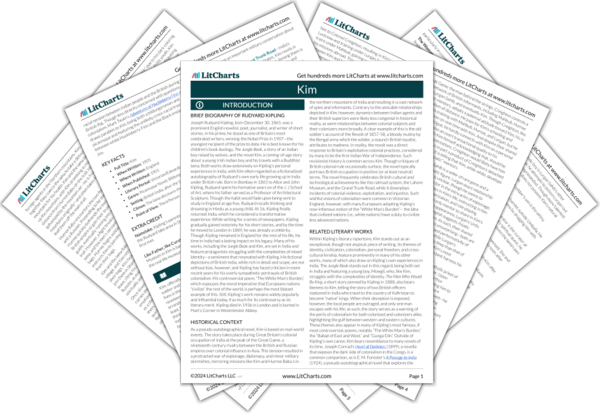The lama’s surprise at Kim’s whiteness testifies to the extent of Kim’s acclimatization to Indian culture, underscoring the socially constructed nature of race. Though he is white, his immersion in the land and its “customs” make him appear otherwise. This scene also highlights the lama’s growing affection for Kim, a symptom of the lama’s internal battle between his belief in spiritual detachment and his natural inclination towards earthly attachment.
